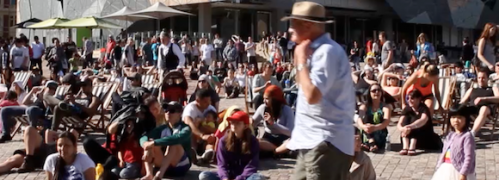Self-segregation of races in public areas

English-speaking white people are more likely to 'self-segregate' or 'stick together', new research has found.
The study, in collaboration with Deakin University, explored the role of public spaces in promoting understanding and contact between different racial groups through short-term observation in three localities.
A total of 974 people were observed, with most occurring in sports settings (40.7 per cent), shopping centres (24.9 per cent) and libraries. It was found that public spaces within Australian communities encouraged social dynamics that reinforced racial segregation and isolation of racial minority groups.
The majority and minority groups were researcher-assigned through observation of physical appearance such as skin colour, clothing items such as a hijab or turban and language use or linguistic cues.
Lead researcher Dr Naomi Priest from the Melbourne School of Population and Global Health said the study had some interesting findings about group interactions.
"Those from the English-speaking white majority group tended to interact predominately with other majority group members, and were more likely to 'self-segregate' in public spaces than those from minority groups," Dr Priest said.
"This supports evidence that, generally, the preference of the majority will have a stronger impact on segregation patterns than those of the minority, such as that minority people are likely to be socially isolated or have no contact when majority members self-segregate."
Dr Priest said this study could also inform policies to reduce racism, promote cultural diversity and as a consequence, better the health of the community.
Strategies to promote accessibility could include having structured activities in public spaces such as community arts programs and sports teams or cultural training in the workplace, to build empathy and understanding.
Previous studies have shown that racism can also have detrimental effects on health outcomes for individuals as well as for communities.
"Racism is known to detrimentally effect a range of health outcomes, including both mental and physical health," she said.
"The findings of this study highlight important behavioural targets for intervention to reduce racism and provide specific and contextual information regarding interactions within public settings. In particular, targeting public spaces as settings for intergroup contact as well as to promote accessibility and use by those from minority backgrounds," she said.
Provided by University of Melbourne
















